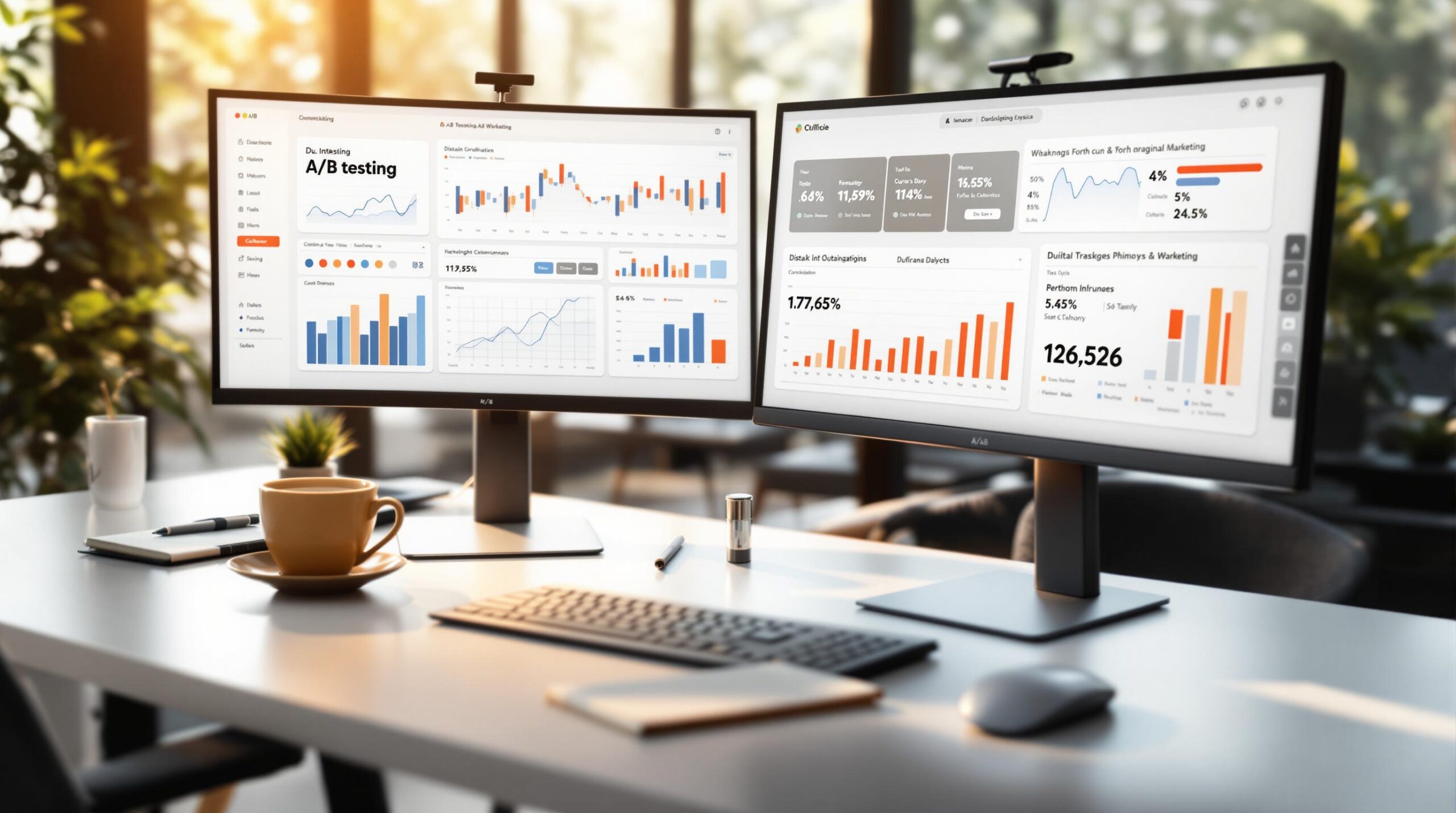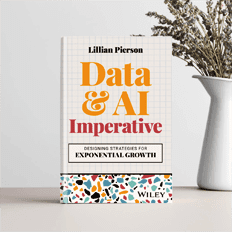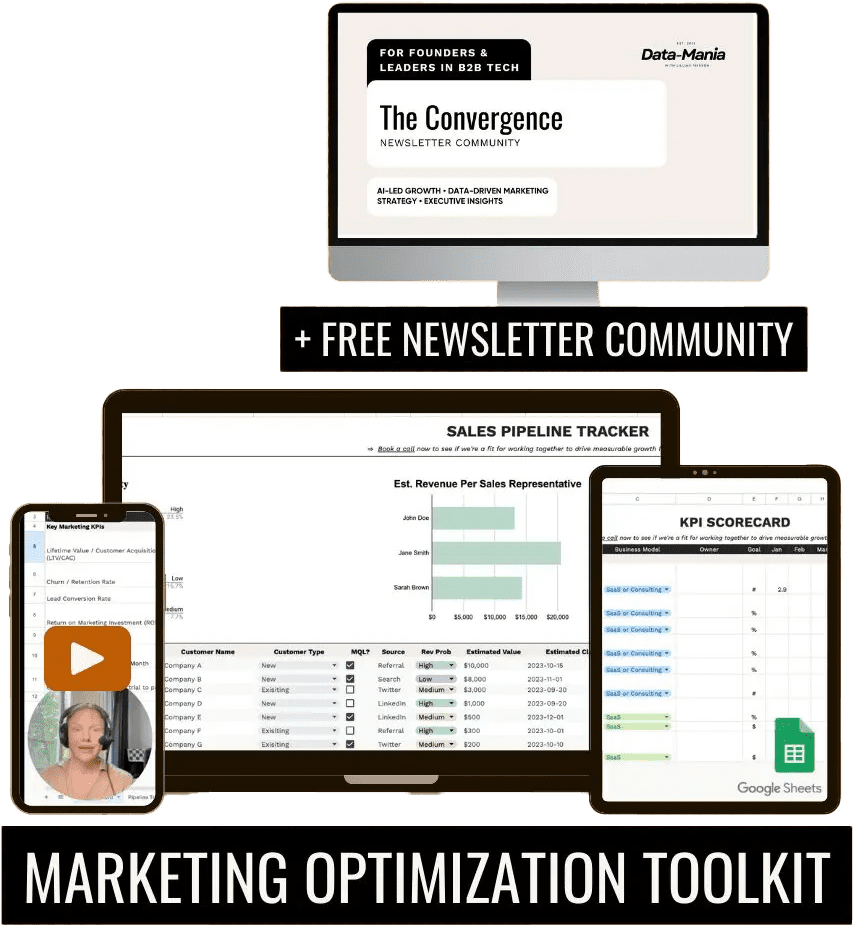A/B testing is a powerful way to improve B2B marketing campaigns by identifying what works best for your audience. Here are the key tips to get started:
- Define Clear Goals: Focus on measurable objectives like increasing lead conversions or reducing form abandonment.
- Select Key Elements for Testing: Prioritize high-impact areas like CTAs, forms, and landing pages.
- Segment Your Audience: Test based on company size, decision-making roles, or buying stages.
- Calculate Sample Sizes: Use tools to determine the right audience size for reliable results.
- Set Test Duration: Allow enough time to gather meaningful data, especially for smaller B2B audiences.
- Test One Variable at a Time: Focus on one change per test to identify what drives results.
- Analyze Beyond Conversions: Look at metrics like lead quality, engagement, and customer lifetime value.
- Implement Continuous Testing: Make testing an ongoing process to refine strategies over time.
- Use Automation and AI: Leverage tools for faster insights and personalized tests.
- Share Insights Across Teams: Collaborate with sales, product, and customer success teams to maximize impact.
Quick Overview of Testing Priorities
| Aspect | What to Test | Why It Matters |
|---|---|---|
| High Impact | CTAs, Forms, Value Propositions | Directly affects conversions and lead generation. |
| Medium Impact | Layouts, Headlines, Content | Influences engagement and usability. |
| Low Impact | Colors, Design Elements | Minimal effect but useful for fine-tuning. |
Start by setting clear goals, focus on impactful changes, and use data to guide decisions for better ROI.
A/B Testing Best Practices for your B2B Website
1. Define Clear Goals
Setting clear goals is the backbone of effective B2B A/B testing. Each test should directly support your broader marketing strategy by focusing on specific, measurable objectives tied to business outcomes.
A structured framework, like HEART, can help organize goals around areas such as engagement and retention. This ensures a systematic approach to setting priorities for your tests.
Here’s what specific and measurable goals might look like:
- Increase qualified lead conversion rate from 2% to 3%
- Reduce form abandonment rate by 25%
- Improve email click-through rates by 15%
"Metrics guide A/B tests, ensuring experiments align with business objectives." – Twilio Segment [1]
For instance, a marketing team noticing low newsletter open rates could test different subject lines and email copy to find what resonates most with their audience [1].
To achieve meaningful outcomes, focus on analyzing your current performance metrics, pinpointing gaps, and setting both primary and secondary goals. Define key performance indicators (KPIs) to measure success.
In B2B testing, longer timelines are often necessary, and key metrics might include:
- Content engagement rates
- Marketing qualified lead (MQL) generation
- Sales qualified lead (SQL) conversion
- Average deal size
- Customer lifetime value
Once your goals are clear, the next step is deciding which campaign elements to test for the best results.
2. Select Key Elements for Testing
Once you’ve set your goals, it’s time to focus on testing the elements that directly influence lead generation and conversions. The ICE framework – Impact, Confidence, and Ease – is a handy tool for deciding what to test first. It helps you zero in on the high-impact features that are closest to conversion points.
For B2B testing, here’s how to prioritize:
- High Impact: Lead forms, CTAs (calls-to-action), and value propositions.
- Medium Impact: Landing page layouts, headlines, and content structure.
- Lower Impact: Design elements and color schemes.
"A/B testing is critical in business-to-business (B2B) email marketing, comparing two or more campaign variations to determine which performs better." – Digital Authority Partners [2]
When setting up your tests, think about how different audience segments might respond. For instance, enterprise clients often react differently to messaging and CTAs than SMB (small and medium-sized business) prospects. Some key areas to test include:
- The length of forms and the number of required fields.
- How value propositions are framed and communicated.
- The text and placement of CTAs.
- The structure and hierarchy of your content.
Instead of focusing on small tweaks like button colors, aim for bigger changes – such as entirely new value propositions – that can provide deeper insights. Keep in mind that tests at the enterprise level may take weeks or even months to show meaningful results [1]. So, prioritize variations that can offer actionable takeaways.
3. Segment Your Audience
Breaking your audience into specific groups is key to getting actionable insights from your B2B A/B tests. You can group your audience by factors like company size, industry, decision-making role, or where they are in the buying process. This lets you design tests that speak directly to each group’s needs.
For instance, enterprise clients might look for detailed ROI breakdowns, while smaller businesses may prefer quick, cost-focused messaging. By tailoring your tests to these nuances, you ensure they align with the goals you’ve already set.
Here’s a useful breakdown of how to approach segment-based testing:
| Segment Type | Test Elements | Key Considerations |
|---|---|---|
| Enterprise | Long-form content, case studies | Longer buying cycles, multiple decision-makers |
| SMB | Quick-start guides, price comparisons | Faster decisions, budget concerns |
| Technical Decision Makers | Feature specs, API documentation | Accuracy, integration requirements |
| Business Decision Makers | ROI data, business outcomes | Strategic benefits, competitive edge |
"By strategically choosing these elements, marketers can gain valuable insights into their audience’s preferences and behavior, allowing them to make informed decisions that enhance overall campaign performance." – Digital Authority Partners [2]
Make sure to use analytics tools to confirm that each segment has enough people to produce reliable results. Focus on testing elements that have the largest impact on conversion rates for each group to get the most out of your efforts.
Start by testing larger audience segments to gather insights quickly, then narrow down to smaller groups for more detailed analysis. Once you’ve divided your audience, ensure your sample sizes are large enough to produce trustworthy data.
4. Calculate Sample Sizes
Getting the sample size right is key for reliable B2B A/B testing. A sample that’s too small can produce unreliable results, while an overly large one wastes time and resources. This is especially important in B2B campaigns, where audience sizes are often much smaller compared to B2C.
To figure out the right sample size, you’ll need to factor in your baseline conversion rate, minimum detectable effect (MDE), and desired confidence level. The required sample size can vary depending on the testing method you choose:
| Testing Methodology | Recommended Sample Size | Best Use Case |
|---|---|---|
| Bayesian | 500 per variation | Smaller audiences or quicker results |
| Sequential | 1,000–1,500 per variation | Major campaign changes |
| Multi-armed bandit | 250 for the lowest-performing variation | Continuous optimization |
For high-stakes tests, like those involving enterprise-level solutions, aim for at least 1,000 contacts per variation. However, for simpler tests, such as email subject lines or minor UI tweaks, smaller samples can be sufficient.
"To A/B test a sample of your list, you need a list size of at least 1,000 contacts. If the list size is smaller, a larger proportion of the list must be tested to achieve statistically significant results." – Khalid Saleh, CEO and co-founder of Invesp [3]
Using an A/B test calculator can help streamline this process. Plug in your baseline conversion rate, MDE, confidence level, and statistical power (usually 80%) to get an accurate sample size. This approach ensures a balance between statistical accuracy and the constraints of B2B marketing.
Since B2B audiences are smaller, tests often need to run longer to gather enough data. Setting your statistical power at 80% or 90% ensures your results are valid, giving you the confidence to act on the findings.
Once your sample size is set, the next step is aligning your test duration with your audience size and campaign goals.
5. Set Test Duration
B2B marketing comes with its own challenges – longer sales cycles and smaller audiences. This means setting the right test duration takes careful thought and planning. Unlike B2C tests that can wrap up quickly, B2B tests need more time to deliver meaningful results.
Here’s what to consider when deciding on test duration:
| Factor | Suggested Approach |
|---|---|
| Base Duration | 14-28 days |
| Traffic Volume | 1,000+ deliveries per variant |
"The representativeness of your sample and the size of the effect matter more than the exact number of visitors." – Lukas Vermeer, Data Scientist at Booking.com [1]
For enterprise-level B2B testing, keep these in mind:
- Run tests over full weekly cycles to capture consistent patterns.
- Include both peak and off-peak traffic periods.
- Factor in traffic from different sources.
- Align with typical B2B buying habits.
At Outreach, they’ve set specific benchmarks: at least 100 deliveries per variant and 30 combined replies before ending a test [1].
While Bayesian methods can shorten test durations from 108 to 33 days, rushing decisions can lead to errors. In B2B, conversion rates often fluctuate by day or time, so sticking to a steady testing period is critical – even if early results seem promising.
Once you’ve nailed down the right test duration, the next step is to focus on testing one variable at a time for precise results.
sbb-itb-e8c8399
6. Test One Variable at a Time
When running B2B A/B tests, it’s essential to focus on one variable at a time. Why? Testing multiple changes at once makes it nearly impossible to figure out what actually influenced the results. It’s like trying to solve a puzzle when all the pieces are mixed up.
By sticking to single-variable tests, you can get clear, actionable insights tied to your goals and priorities. Here’s a quick breakdown of testing priorities:
| Priority | Examples |
|---|---|
| High | CTAs, Headlines, Form Fields |
| Medium | Email Subject Lines, Landing Page Layout |
| Low | Button Colors, Image Placement |
Focus on the elements that have the biggest impact on conversion rates. A handy way to prioritize is by using the ICE framework – assessing each variable based on its Impact, Confidence in success, and Ease of implementation. This helps you decide which variable to test first with the least effort and the most potential for insights.
For example, if you’re testing a B2B landing page, don’t change both the headline and CTA at the same time. Testing one element ensures you can confidently identify what caused the results.
To keep your testing process solid, document baseline metrics, choose one variable to test, create clear alternatives, and track results until they reach statistical significance. For B2B campaigns, it’s especially important to focus on elements that align with longer sales cycles and more complex decision-making processes. Aim for a 95% confidence level in your results to ensure they’re reliable.
Once you’ve tested and isolated key variables, you’ll be ready to dig deeper into the results and analyze them beyond basic conversion metrics.
7. Analyze Beyond Conversions
Conversion rates are important, but they don’t tell the whole story when it comes to B2B A/B test performance. To truly understand the impact of your tests, you need to look at metrics that reflect long-term business value.
While setting sample sizes and testing variables is essential, digging into additional metrics ensures your efforts lead to meaningful outcomes. Here are some key metric categories to consider:
| Metric Category | Key Metrics | Why It Matters |
|---|---|---|
| Value Metrics | Customer Lifetime Value (CLV), Average Order Value | Tracks long-term revenue contributions |
| Engagement Metrics | Session Duration, Events per Session | Highlights the depth of user interaction |
| Quality Metrics | Lead Conversion Rate, Qualified Sales Leads | Shows the quality of leads generated |
| Retention Metrics | User Return Rate, Product Usage | Indicates customer satisfaction and loyalty |
Real-world examples show why this broader analysis is essential:
- Segment found that while their chatbot implementation only delivered modest short-term gains, it boosted long-term customer conversion likelihood by 82% [1].
- Frank & Oak saw a 150% increase in mobile signups after adding a "Connect with Google" button. However, secondary metrics like session duration and retention confirmed the quality of those users [1].
To get the most out of your analysis, track multiple metrics, break down results by audience segments, and evaluate both short- and long-term impacts. Companies that prioritize data-driven decision-making are 23 times more likely to successfully acquire customers [1].
Use tools designed for advanced product analytics to monitor metrics like active users, product usage, and interactions per user. This approach gives you a complete view of how your A/B test variations affect user behavior and business outcomes.
Once you’ve gained these insights, you’ll be ready to focus on building a culture of continuous testing to refine and improve your strategies.
8. Implement Continuous Testing
Continuous testing is key to keeping your B2B campaigns aligned with changing audience behaviors. It builds on the idea of setting clear goals and testing one variable at a time, leading to ongoing improvements.
Did you know? A/B testing can boost leads by up to 40% for B2B sites when it’s part of a continuous improvement plan.
Here’s how successful companies structure their testing programs:
| Testing Phase | Key Activities | Success Metrics |
|---|---|---|
| Planning & Execution | Prioritize tests, allocate resources, monitor results | Statistical accuracy, potential impact |
| Analysis | Collect data, extract audience-specific insights | Conversion rate changes, revenue impact |
| Iteration | Apply findings, launch new tests | Long-term performance gains |
For example, TruckersReport completed six rounds of tests over six months, gathering actionable data while maintaining momentum. Copy Hackers saw a 24% boost in homepage conversions after a week-long test, even though early results were inconclusive.
"A/B testing should be an ongoing effort. Email marketing is fluid; people’s habits and motivations will shift." – Etumos
To make continuous testing work for you:
- Plan a testing calendar that factors in seasonal trends and business cycles
- Limit yourself to three tests per variable to avoid overwhelming your data
- Keep a record of past metrics and build new tests based on previous ones
- Regularly review results and tweak your approach as needed
The best B2B marketers know that ongoing testing does more than just refine campaigns – it provides deeper insights into user behavior over time. It’s not about constant changes but about staying methodical and consistent. Set clear goals, track your progress, and use automation tools to simplify the process without cutting corners.
Once you’ve mastered continuous testing, you’ll be ready to scale your efforts with automation and AI.
9. Use Automation and AI
AI-powered A/B testing is changing the game for B2B marketing. It delivers insights faster and with greater precision than traditional manual methods. This is especially useful in B2B campaigns, where smaller audiences and longer sales cycles can make testing more challenging.
Take Toyota, for example. Their Digital Communication Manager shared that AI-powered testing not only outperformed manual lead scoring but also saved them a lot of time in the process [1].
Here’s how some companies are using AI and automation in their testing programs:
| Company | AI Implementation | Results |
|---|---|---|
| Ashley Furniture | AI-powered testing platform | 15% boost in conversions |
| Sprig | AI-driven survey analysis | Faster analysis times |
| Adobe Target | Self-learning algorithms | Automated optimization |
"If you’re looking to improve the impact and performance of your A/B testing program, there’s no better way than using AI to help you better predict, ideate, prioritize, launch, troubleshoot, and personalize your tests." – Craig Sullivan, CEO of Optimize or Die
To make AI work effectively in your testing process, keep these steps in mind:
- Ensure your data is clean and consistent: AI relies on quality data for accurate results.
- Select tools that fit your existing tech stack: Compatibility is key for seamless integration.
- Review AI-generated variations: Make sure they align with your brand’s voice and standards.
For the best outcomes, look for AI platforms that offer real-time analysis, predictive insights, personalization options, and automated reporting. These features make it easier to adapt to market shifts while delivering faster, more actionable results.
10. Share Insights Across Teams
A/B testing results can have a bigger impact when they’re shared across teams, helping the entire organization improve rather than keeping the data confined to marketing.
Take HubSpot, for example. They boosted lead quality by 37% by sharing A/B testing insights with their sales and product teams. This collaboration helped refine the customer journey from start to finish.
Here’s how different teams can benefit from A/B testing insights:
| Team | How They Use Testing Data | Impact on Business |
|---|---|---|
| Sales | Adjust pitch messaging | Better conversion rates |
| Product Development | Determine feature priorities | Focused updates |
| Customer Success | Enhance onboarding materials | Lower customer churn |
| Content | Fine-tune messaging strategies | Increased engagement |
To make sharing insights effective across your organization:
- Use dashboards and regular meetings to ensure data is accessible and actionable for everyone.
- Set up a shared repository to store test results.
- Document key findings and provide clear, actionable recommendations for each team.
"Successful B2B companies test and share insights across teams for better decisions." – Craig Sullivan, CEO of Optimize or Die
When presenting test results, focus on metrics that matter most to each team. For instance, sales teams might be more interested in lead quality, while product teams may care about feature adoption rates. Customizing your communication ensures the insights are relevant and actionable.
Conclusion
A/B testing has proven to deliver measurable growth in B2B marketing, with businesses experiencing an average 14% boost in conversion rates [2]. Examples like HubSpot’s 25% increase in conversions and The New York Times achieving a 30% rise in email open rates showcase its real-world impact [3][4].
The key to success lies in understanding why certain variations work and applying those lessons across broader strategies. By focusing on clear objectives, ongoing testing, and collaboration across teams, B2B companies can drive consistent growth and better ROI.
Here’s a breakdown of what successful A/B testing looks like:
| Testing Component | Role in Success | Outcome Achieved |
|---|---|---|
| Clear Goals | Keeps efforts aligned | 60% higher success rate |
| Continuous Testing | Fuels steady progress | 14% average conversion lift |
For businesses looking to refine their approach, Data-Mania offers expert guidance. Their focus on data-driven frameworks, go-to-market strategies, and product-led growth ensures companies can fully leverage the potential of A/B testing to meet their goals.
FAQs
How do you implement an AB test?
A/B testing in B2B marketing works best when approached with a clear, structured plan. Setting specific goals upfront is key to turning this process into actionable insights.
Here’s a simplified guide to the steps involved:
| Step | What to Do |
|---|---|
| Plan & Set Up | Review your data, define objectives, choose tools, and identify your audience segments. |
| Run & Analyze | Launch the test, track performance, and measure key metrics. |
| Implementation | Use the results to make informed changes and document what you’ve learned. |
"A/B testing is crucial in B2B marketing campaigns as it allows for optimization and improvement. Marketers can refine their campaigns to better meet the needs of their audience and stay competitive."
To ensure accurate results, calculate the right sample size, run the test long enough, and aim for a 95% confidence level.
If you’re in the tech industry and want to refine your A/B testing, Data-Mania offers expertise in data-driven strategies that can help improve your efforts across various marketing platforms.
Related Blog Posts
- Marketing Tech Stack Checklist for Early-Stage Startups
- AI Agents in Marketing: The Secret to Driving 10x Engagement & Conversions
- 5 Ways AI Can Optimize Marketing ROI for your Tech Startup
- How Data Improves ABM Segmentation ROI





